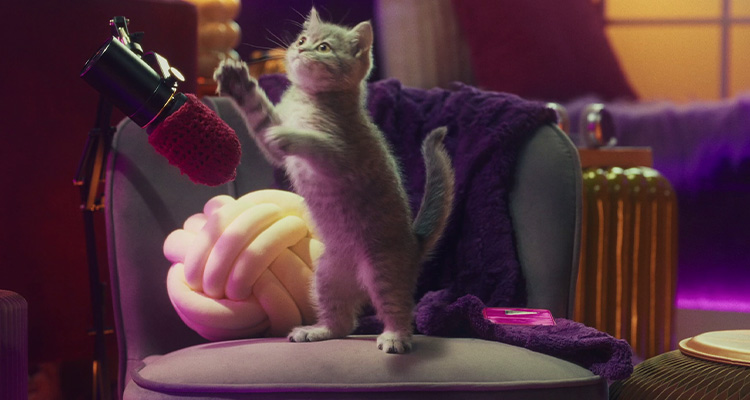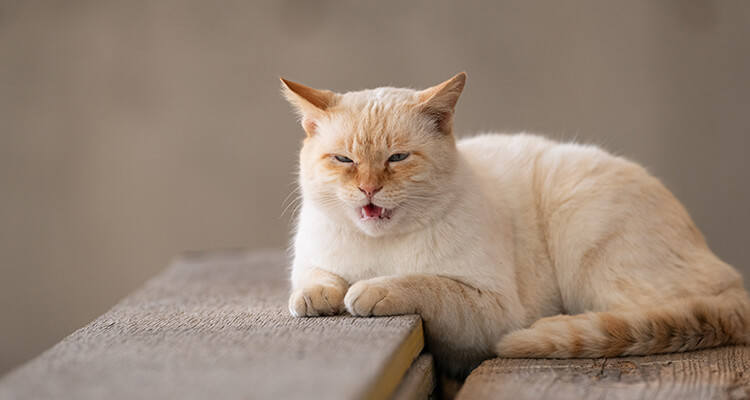
If you’ve recently welcomed a new kitten into your home (congratulations!), you’re bound to be very excited right now. To help them grow and develop happily and healthily, it’s important to feed them a diet that meets their nutritional needs, but we know that can be tricky if you’ve got a picky little eater. We’ll help you to uncover why your kitten is being fussy and offer tips on getting them to eat. This practical advice will help you ensure your little bundle of feline loveliness thrives and that they don’t grow into a fussy cat – or at least not TOO fussy. Most cats are a bit fussy, and we love them for it!
Why is my kitten so fussy?
There could be lots of reasons why your kitten is refusing to eat what they’re given. Let’s take a look:
Are you introducing new foods gradually?
We find it helps to be slow and patient when introducing your kitten to a new food. One solution is to mix a little of something new into something they already deem acceptable.
Are you feeding your kitten too many scraps?
Your new kitten is a-dor-able, right? So it’s natural you want to spoil them. However, giving them scraps from your table can mean there’s no room left in their tiny tummies for their proper meals. (Also, did you know that some human food can be dangerous for our feline friends? Find out more here.)
Is your kitten happy with their bowl?
Sometimes a kitten not eating is nothing to do with the actual food. Cats tend not to like narrow bowls that cause their whiskers to touch the side (because their whiskers are very sensitive). Plastic bowls often get a ‘paws down’ and can harbour bacteria, so we recommend you go for stainless steel, glass or ceramic. Cats also have a highly developed sense of smell so something less than scrupulously clean can often be a no no.
Is your kitten happy with where their bowl is placed?
Once you’ve got a bowl your kitten is happy with, you need to position it somewhere they’re happy with. Some of our furry friends prefer their bowl not to be placed on the floor and prefer it to be on a table or kitchen counter. Most cats don’t like their food to be too near to their litter tray – after all, would you like to eat near the toilet? They also like to eat somewhere relatively peaceful (again, who can blame them?), therefore it’s best to avoid high-traffic or noisy areas. Your kitten may also be put off approaching their bowl if there are other pets too nearby.
How to deal with a fussy kitten
If your kitten seems to be turning their cute little nose up at everything you serve them, there are two possibilities. The first is that your kitten’s fussiness is just ‘normal’ cat behaviour. If that’s the case, then you can fix the problem with the solutions suggested here. However, the second possibility is that you kitten has lost their appetite. This could be a warning sign so you should talk to your vet to rule out any medical issues.
How can I get my fussy kitten to eat?
If you’ve got a fussy kitten, here are five tips to help get them eating:
1. Understand why they’re not eating
The first thing you need to do is get inside your kitten’s head to understand why they’re not eating. Check out the advice above to help you do this.
2. Feed them tempting food!
Okay, so this may sound obvious, but kittens, just like us, are more likely to eat if their food is tempting! Cats generally don’t like their food ‘fridge cold’, preferring meals at room temperature or even gently warmed. The latter releases enticing aromas (remember cats have a highly developed sense of smell). You can warm wet food for a short time in the microwave or add a little hot water to dry food. Of course, whatever temperature food is, flavour matters too. That’s why, the WHISKAS® experts have developed a new range of recipes to delight even the fussiest feline. Offer you kitten a variety of tastes and textures and add in new things gradually. Everything in our kitten range has been created to meet all your little one’s nutritional needs and help them to grow and thrive.
3. Feed them little and often at first
Your kitten’s stomach is tiny! This means they’re unable to eat too much at once. Even as your little one becomes an adult cat, they’re likely to prefer smaller, more frequent meals.
4. But try to avoid running an all-day café!
That said, it’s best not to let your kitten just graze all day long. If you feed them wet food, anything that hasn’t been eaten will need put in the fridge within a couple of hours so it doesn’t spoil – remember that cats prefer meals at room temperature or gently warmed. Even if you’re feeding your kitten dry food, bear in mind that its nutritional value will start to deteriorate if it’s left out for too long. Also, it will go stale so won’t be as tasty for your kitten.
5. A word on howling for treats!
Your kitten’s howls are plaintive and designed to get your attention, but it stands to reason that if they fill up on treats, they won’t have room left for their proper meals, so make sure to feed your cat the right amount of treats. Providing treats every time your kitten asks for them also teaches them to repeat this behaviour in the future and eventually lead to obesity.
Preventing your kitten becoming a picky cat
A cat who gets used to lots of different flavours and textures when they’re young is much more likely to accept a variety of foods as they get older. We recommend you offer your kitten a wide variety of different meals as this will help stop them becoming a picky eater in later life.
Understanding your kitten’s nutritional needs
Kittens have a lot of growing and developing to do in their first year of life so it’s important they have a diet that supports their needs.
Kitten food has more calories than adult cat food. It also contains all the other nutrients your furry friend needs. These include:
- Protein: Kittens need about 30% of their total energy from protein.
- Fat: Essential fatty acids are vital to support your kitten’s growth and development.
- Calcium and phosphorous: Vital for healthy teeth and bone development.
- Taurine and Choline: Just like adult cats, your little one needs these essential amino acids.
- Vitamins and minerals: Cats of all ages need vitamins and minerals, but it’s no surprise that a growing kitten requires even more. Kitten food contains extra magnesium, copper, iodine and vitamin A.
- DHA: This omega-3 fatty acid is vital for your kitten’s brain development.
It’s also important that your kitten always has access to fresh water. Bear in mind that, in the same way cats are particular about where their food bowls are placed, they also need their water to be somewhere they approve of (away from their litter tray and sometimes from their food). Also, some prefer to drink from a running tap, so as much as possible, think about providing multiple water sources to ensure they are drinking often.
How your kitten’s nutritional needs change as they grow and develop
During the first few weeks of a kitten’s life, all their nutritional needs are met by their mother’s milk, and they will nurse multiple times a day.
Around week three or four, a kitten’s nutritional needs will change, because their mother’s milk production will start to decrease and so will the kitten’s ability to digest lactose. This is the time they will start needing to be weaned. As responsible breeders will only let a kitten leave their mother when they’re about 12 weeks old, it’s likely your kitten will already be weaned by the time you welcome them into your home.
Small kittens have tiny tummies so they need to be fed little and often until they’re about a year old, when they can transition to less frequent meals. Even adult cats tend to prefer more frequent small meals though, as it mimics their natural hunting cycles of small rodents and birds.
Once kittens have reached 90% of their expected adult weight, they can move from a diet designed for kittens to one created for adult cats. We recommend making this change gradually to avoid upsetting their digestion (and them!).
Whatever stage of life your kitten or cat is at, it’s very important you feed them a complete food that meets all their nutritional needs. All WHISKAS® main meal recipes are complete – which means they’re as good for your furry friend as they are tempting to them!
Choosing the best food for your kitten
When you buy WHISKAS® kitten food, you can be confident it will meet all your furry friend’s nutritional needs and support their growth and development. That means the only decision you’re left with is which tempting recipe to go for. Your kitten will be sure to let you know which ones are their favourites!







